Oct 13, 2017 | coins, commemorative, news

Secretary of the Interior Ryan K. Zinke
In an article that appeared in The Washington Post, it was reported that Secretary of the Interior Ryan Zinke has the department fly a special flag on top of the agency’s building in Washington, D.C. when he is in the office. On days Zinke is not in the office, a flag is raised for Deputy Secretary David Bernhardt.
Zinke, the former Montana congressman, is a former Navy SEAL commander and may have adopted this tradition from his time in the service.
Zinke also commissioned personalized challenge coins to give to staff and visitors.
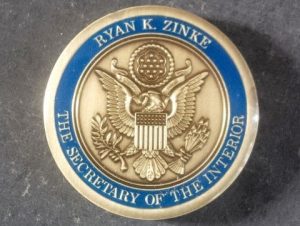
Challenge Coin commissioned by Interior Secretary Ryan Zinke
Typically, a challenge coin is a small medal, usually no larger than 2-inches in diameter, with the insignia or emblem of the organization. Two-sided challenge coins may have the emblem of the service on the front and the back has the emblem of the division or other representative services. Challenge coins are traditionally given by a commander in recognition of special achievement or can be exchanged as recognition for visiting an organization.
Receiving a challenge coin, especially from a high ranking official is supposed to be considered an honor.
Over the last 15 years, challenge coins became popular outside of the military as retired service members began to work in other areas of the government. The tradition has even been adopted by state and local governments and sometimes used to help raise money for municipal projects.
While most agencies have challenge coins, Zinke may be the only secretary to have one personalized. There was no report on the cost of the coins to taxpayers.
Although having a personalized challenge coin along with his flag ritual is unusual for a Cabinet-level official, there appears nothing wrong with him doing this. Zinke appears to have enthusiastically embraced his job at the Department of the Interior and if he uses the challenge coin to help reward department employees, then this is a good move on his part.
Credits
- Official portrait of Secretary Zinke courtesy of the Department of the Interior.
- Zinke Challenge Coin image courtesy of The Washington Post.
Oct 11, 2017 | celebration, coin design, coins, commemorative, US Mint

Utah sculptor LeRoy Transfield, right, poses in his sculpting studio in Orem.
The winning design was submitted by LeRoy Transfield, a sculptor from Orem, Utah.
In an interview that appeared in the Desert News, Transfield said that he had two uncles that served as members of the New Zealand Expeditionary Force Native Contingent during World War I. This lead to his interest in learning about the history of the war.
-
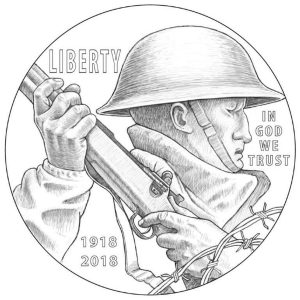
-
2018 World War I Centennial Silver Dollar Obverse — “Soldier’s Charge” by LeRoy Transfield
-
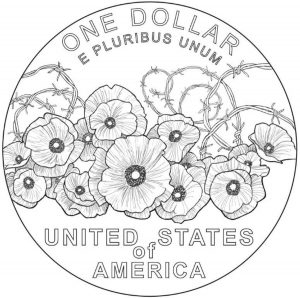
-
2018 World War I Centennial Silver Dollar Reverse — “Poppies in the Wire” by LeRoy Transfield
For the obverse, Transfield titled it “Soldier’s Charge.” In the interview, Transfield said that he “didn’t want him to look like some model in an artist’s studio. I made his nose like it might’ve been broken. I wanted to give him a rugged looking face. … I wanted that feeling of combat”
Transfield said that the reverse was more difficult to for him to design. After several tried he came up with the “Poppies in the Wire”
In 2012,
I wrote about the poem “In Flanders Fields” and suggested that it be adopted on a U.S. commemorative coin. It only took five years for my suggestion to become a reality! You can read about the poem and my recommendation
→ here.
Poppies are a fitting tribute since their use was inspired by the poem “In Flanders Fields.” The poem was written by Lt. Col. John McCrae, a Canadian physician following the funeral of a friend and fellow soldier who died in battle. It was published in 1915 and first adopted by the American Legion to commemorate the American Soldiers killed in the war. It was later adopted by veterans groups within the British Empire including Canada.
Transfield is originally from New Zealand but moved to the United States to attend BYU-Hawaii. After graduating with a Bachelors of Fine Arts degree, he moved with his wife to Orem where he operates a sculpting studio in his garage.
Based on the line drawing, it appears that this is going to be an excellent design when struck on a 40mm silver planchet. This is one time where it appears that the Citizens Coinage Advisory Committee and the U.S. Commission of Fine Arts got it right in picking the design.
The World War I American Veterans Centennial Commemorative Coin will be issued in 2018. According to the law (Public Law 113-212) , the U.S. Mint is limited to selling no more than 350,000 silver dollars. Each coin will have a $10 surcharge (a maximum of $3.5 million) will be paid to the U.S. Foundation for the Commemoration of the World Wars to assist the World War I Centennial Commission in commemorating the centenary of World War I.
Given the texture in the both the soldier on the front and the poppies on the reverse, it will be interesting to see if the U.S. Mint comes up with an enhanced uncirculated version. It could be extraordinary!
Credits
- Image of LeRoy Transfield in his studio courtesy of the Desert News.
- Coin line art images courtesy of the U.S. Mint.
Oct 3, 2017 | coins, commemorative, legislative
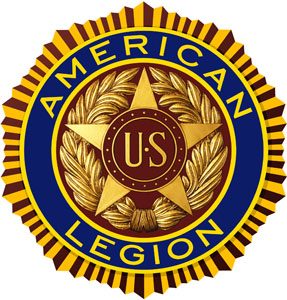 Sometimes, it takes time for the online system to catch up with the acts of Congress. But in what looks like a rare display of bipartisanship, the Senate passed The American Legion 100th Anniversary Commemorative Coin Act (H.R. 2519) on September 29, 2017. It becomes the first piece of numismatic-related legislation passed by the 115th Congress.
Sometimes, it takes time for the online system to catch up with the acts of Congress. But in what looks like a rare display of bipartisanship, the Senate passed The American Legion 100th Anniversary Commemorative Coin Act (H.R. 2519) on September 29, 2017. It becomes the first piece of numismatic-related legislation passed by the 115th Congress.
When signed by the president, who is in Puerto Rico today and expected to be in Las Vegas tomorrow, the American Legion 100th Anniversary Commemorative Coin program will be the second commemorative program of 2019. The other is the Apollo 11 50th Anniversary Commemorative program.
Typical of the three coin commemorative programs, the law authorizes a $5 gold, $1 silver, half-dollar clad coins with maximum mintages of 50,000, 400,000, and 750,000 respectively.
According to the bill, “The design for the coins minted under this Act shall be emblematic of The American Legion.” Other than the required inscriptions, no other restrictions were placed on the design except the required reviews by the U.S. Commission of Fine Arts and Citizens Coinage Advisory Committee.
Surcharges of $35 for the gold coin, $10 for the silver coin, and $5 for the clad coin will go to the American Legion to help with their service efforts. If the program sells out, the Amercian Legion can earn $9.5 million.
H.R. 2519: The American Legion 100th Anniversary Commemorative Coin Act
Summary: This bill requires the Department of the Treasury to mint and issue commemorative coins in recognition and celebration of the 100th anniversary of the American Legion.Surcharges received from the sale of these coins shall be paid to the American Legion for costs related to promoting the importance of: (1) caring for those who have served, and those who are still serving, in the Armed Forces; and (2) maintaining patriotic values, strong families, and assistance for at-risk children.
Referred to the House Committee on Financial Services. — May 18, 2017
Motion to reconsider laid on the table Agreed to without objection. — Sep 25, 2017
Received in the Senate. — Sep 26, 2017
Message on Senate action sent to the House. — Sep 29, 2017
Presented to President. — Sep 29, 2017
Oct 1, 2017 | coins, commemorative, commentary, legislative
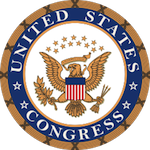 Trying to follow the inner workings of politics is more frustrating than what you see on television news. Part of following the inner workings of Congress is to try to figure out what Congress will do next is not only understanding where legislation is in the process, what Congress calls “regular order,” but it also requires understanding who is asking for what favors in order to get pet projects passed.
Trying to follow the inner workings of politics is more frustrating than what you see on television news. Part of following the inner workings of Congress is to try to figure out what Congress will do next is not only understanding where legislation is in the process, what Congress calls “regular order,” but it also requires understanding who is asking for what favors in order to get pet projects passed.
As part of the House of Representatives’s regular order, they created a rule that two-thirds of the members must support a commemorative coin bill by being a co-sponsor before it will be considered in committee. This means that 287 members must sign-on as co-sponsors. Once the bill meets the threshold, the bill goes through the committee process.
Although both the Naismith Memorial Basketball Hall of Fame Commemorative Coin Act and The American Legion 100th Anniversary Commemorative Coin Act met that threshold, the threshold was met a while ago. This means the bills were supposed to go through the committee process except neither did. Both bills were introduced on the floor under a process called “suspension of the rules.” Under suspension of the rules, a bill may be brought to the floor for debate and vote without having to go through regular order.
When a bill is brought to the floor, there is a debate period determined by whoever is acting as the presiding officer. Both sides get to have their say, however, in these cases, the member who introduced the bill will stand up and provide a justification for the record as the only speaker. Once the debate period ends, the House votes on the bill.
Both bills were passed on a voice vote.
What can make following legislation frustrating is that there was no indication that these bills were going to be brought to the floor under suspension of the rules. I had asked a source whether this was done in order to curry favor with the sponsors. My source was uncertain as to why these bills were rushed to the floor.
Now it is on to the Senate. Let’s see how quickly they get to this legislation or whether it will be burried in committee.
H.R. 1235: Naismith Memorial Basketball Hall of Fame Commemorative Coin Act
Introduced: February 27, 2017
Summary: This bill directs the Department of the Treasury to mint and issue not more than 50,000 $5 coins, 400,000 $1 coins, and 750,000 half-dollar coins in recognition and celebration of the Naismith Memorial Basketball Hall of Fame.The coins shall be in the shape of a dome, and the design on the common reverse of the coins shall depict a basketball. Treasury shall hold a competition to determine the design of the common obverse of the coins, which shall be emblematic of the game of basketball.The bill requires all sales of such coins to include specified surcharges, which shall be paid by Treasury to the Hall to fund an endowment for increased operations and educational programming.
Referred to the House Committee on Financial Services. — Feb 27, 2017
Motion to reconsider laid on the table Agreed to without objection. — Sep 25, 2017
Received in the Senate and Read twice and referred to the Committee on Banking, Housing, and Urban Affairs. — Sep 26, 2017
H.R. 2519: The American Legion 100th Anniversary Commemorative Coin Act
Introduced: May 18, 2017
Summary: This bill requires the Department of the Treasury to mint and issue commemorative coins in recognition and celebration of the 100th anniversary of the American Legion.Surcharges received from the sale of these coins shall be paid to the American Legion for costs related to promoting the importance of: (1) caring for those who have served, and those who are still serving, in the Armed Forces; and (2) maintaining patriotic values, strong families, and assistance for at-risk children.
Referred to the House Committee on Financial Services. — May 18, 2017
Motion to reconsider laid on the table Agreed to without objection. — Sep 25, 2017
Received in the Senate. — Sep 26, 2017
Message on Senate action sent to the House. — Sep 29, 2017
Sep 1, 2017 | coins, commemorative, legislative
We send our hopes and wishes out to the victims of Hurricane Harvey.

A Rockport firefighter goes door to door on a search and rescue mission as he looks for people who may need help after Hurricane Harvey passed through on August 26, 2017, in Rockport, Texas. (Image courtesy of The Atlantic)
The American Red Cross needs blood donors. If you can give blood, visit redcross.org/hp/harvey3 to find a blood drive near you!
You can also visit the Red Cross website to donate to relief efforts. Donations can be made by Credit Card or by using your PayPal account. If you are not comfortable donating on the web, you can call 1-800-RED-CROSS (1-800-733-2767) or you can make a $10 donation by texting HARVEY to 90999. The $10 donation will appear on your next cell phone bill.
The National Voluntary Organizations Active in Disaster group has a collection of member organizations who may be taking both donations and volunteers to help the flood-stricken region. You can see the list on their website at nvoad.org/voad-members/national-members.
The City of Houston has established a Hurricane Harvey Relief Fund. You can find out how to donate directly to the fund on the city’s website at houstontx.gov/mayor/press/harvey-relief-fund.html.
For more information about the federal disaster response and other resources, visit disasterassistance.gov.
Finally, for those looking for numismatic content, here is what happened in August before Congress went on summer break:
H.R. 965: Saint-Gaudens National Historical Park Redesignation Act
Introduced: February 7, 2017
This bill redesignates the Saint-Gaudens National Historic Site, in New Hampshire, as the "Saint-Gaudens National Historical Park."
Referred to the Subcommittee on Federal Lands. — Feb 23, 2017
Ordered to be Reported (Amended) by Unanimous Consent. — Jul 26, 2017
Placed on the Union Calendar, Calendar No. 197. — Aug 25, 2017
S. 1182: The American Legion 100th Anniversary Commemorative Coin Act
Introduced: May 18, 2017
This bill requires the Department of the Treasury to mint and issue commemorative coins in recognition and celebration of the 100th anniversary of the American Legion.Surcharges received from the sale of these coins shall be paid to the American Legion for costs related to promoting the importance of: (1) caring for those who have served, and those who are still serving, in the Armed Forces; and (2) maintaining patriotic values, strong families, and assistance for at-risk children.
Read twice and referred to the Committee on Banking, Housing, and Urban Affairs. — May 18, 2017
Passed Senate with an amendment by Voice Vote. — Aug 3, 2017
Held at the desk. — Aug 4, 2017
S. 1718: 75th Anniversary of the End of World War II Commemorative Coin Act
Introduced: August 2, 2017
Read twice and referred to the Committee on Banking, Housing, and Urban Affairs. — Aug 2, 2017
Aug 17, 2017 | coins, commemorative, commentary
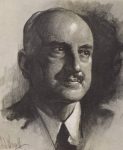
Portrait of George Santayana by Samuel Johnson Woolf (1880-1948)
Events this past week in Charlottesville, Virginia are forcing us to heed Santayana’s warning and look at our history to understand how we got here and why. Regardless of how anyone feels about the issues behind the divisions we cannot condone the use of violence to try to force opinions on others. This is what was tried in the past, which is why we have to learn from it because it seems to repeat itself time and again.
We should not hide our history behind political correctness. We need to put both the good and the bad out front for all to see. We need to learn from both and improve going forward. And this is not only about the Civil War. The United States has had a long record of abuses to the native tribes in the 19th century that we should be ashamed of. In fact, this country continues to abuse the native tribes and violate treaties that were designed to protect both sides. For an example, see the Dakota Pipeline project.
Americans want to celebrate their past and learn from the mistakes but are we continuing to make the same mistake? For every Civil Rights Act of 1964 Silver Dollar (2014), there are stories of the internment of Japanese-Americans during World War II whose only “crime” was to have Japanese ancestry.
Commemorative coins have always been used to help raise money for one cause or another. Members of Congress would bring the request to Washington from their home state and use the support of these bills to bargain with their fellow members to support other bills. It became so bad that the commemorative coins programs were ended following the 1954 release of the George Washington Carver Half Dollar.
During the early period of commemorative coins, Congress authorized the issuance of three commemoratives with themes tied to the Civil War. Two were created to memorialize battlefields and the other a memorial that is causing controversy today.
Stone Mountain Memorial Half Dollar
Stone Mountain Half Dollar Coin Specifications
Year Issued: 1925
Designer: Gutzon Borglum
Composition: .900 Silver, .100 Copper
Weight: 12.50 grams
Diameter: 30.6 mm
Authorization: Public Law 68-46
Mintage: 1,314,709 in Philadelphia
The 1925 Stone Mountain Memorial Half Dollar features the images of Generals Robert E. Lee and Stonewall Jackson. The monument was commissioned by the Stone Mountain Confederate Memorial Association to create a monument to the leaders of the south on the large granite face of the mountain. Both the coin and the monument was designed by Gutzon Borglum. Borglum was the same designer of Mount Rushmore.
The project began in 1916 by the United Daughters of the Confederacy. They were deeded the side of the mountain by the Venable Brothers, who used to mine the stones. Sam Venable used Stone Mountain as a central meeting place as part of the resurgence of the Ku Klux Klan.
The carved memorial was supposed to be a 12-year project. Aside from funding issues, Borglum, who was known to associate with the Ku Klux Klan, quit the project in 1925. That lead to having many problems with funding and maintaining sculptors throughout the years. After the mountain was purchased by the State of Georgia in 1958, there were two attempts to complete the memorial. It was finally completed in 1970.
Congress authorized a production of 5 million coins. These coins were struck in batches of 500,000 at a time in Philadelphia. The coins were sent to the Stone Mountain Confederate Memorial Association which offered them for sale. Despite brisk sales, they only sold about 1.3 million coins. The balance of the last run was returned to the U.S. Mint to be melted.
Battle of Gettysburg Half Dollar
Gettysburg Half Dollar Coin Specifications
Year Issued: 1936
Designer: Frank Vittor
Composition: .900 Silver, .100 Copper
Weight: 12.50 grams
Diameter: 30.6 mm
Authorization: Public Law 74-91
Mintage: 26,928 in Philadelphia
The 1936 Battle of Gettysburg Half Dollar issued to commemorate the 75th anniversary of the Civil War’s bloodiest battle. The obverse features generic the profiles of Union and Confederate soldiers with the words “Blue and Gray Reunion” under the portraits.
During this time, the Gettysburg Battlefield Memorial Association had been transferred from the War Department to the National Park Service for administration. But the area needed additional infrastructure and support. As part of the plans to commemorate the 75th anniversary of the Battle of Gettysburg, the commemorative coin was used to Pennsylvania the necessary money. As with many of the commemorative coins issued during The Great Depression, the program fell short.
Congress authorized a production of 50,000 coins. These coins were struck at Philadelphia and sent to the Pennsylvania State Commission which offered them at $1.65 each. They sold just under 27,000 coins. The rest were returned to the U.S. Mint to be melted.
Battle of Antietam Half Dollar
Antietam Half Dollar Coin Specifications
Year Issued: 1936
Designer: William Marks Simpson
Composition: .900 silver, .100 copper
Weight: 12.50 grams
Diameter: 30.6 mm
Authorization: Public Law 75-160
Mintage: 18,028 at Philidelphia
The 1937 Battle of Antietam Half Dollar was issued to commemorate the 75th anniversary of the battle which General Geroge B. McClellan preventing the invasion of Maryland by General Robert E. Lee’s Army of the Potomac near Antietam Creek. Although Lee’s army was able to withdraw back to Virginia, President Abraham Lincoln relieve McClellan because it was felt that the battle did not defeat Lee’s army.
Similar to the Gettysburg Half Dollar, Maryland proposed a commemorative half dollar in order to improve the infrastructure around the battlefield and cemetery. One of the differences between Antietam and Gettysburg was the network of roads built around the battlefield area that Sharpsburg, the main city along Antietam Creek, was a gateway across the Potomac River into these western areas even before the Civil War. As a natural crossing point, Lee’s army was going to use it to attack the Union from the west.
Congress authorized a production of 50,000 coins. These coins were struck at Philadelphia and sent to the Washington County (Maryland) Historical Society which offered them at $1.65 each. They sold about 18,000 coins. The rest were returned to the U.S. Mint to be melted.
Learning from History
During the times that these commemorative coins were proposed, the commemoratives were met with little interest and even with some disdain that the U.S. Mint would be required to produce so many commemoratives.
Specifically, regarding the Stone Mountain Memorial half dollar, a review of newspaper archives does not mention an outrage over the production of the coin. However, there was plenty of stories about the Jim Crow laws. Predictably, northern newspapers were against them and southern newspapers defended them.
Stone Mountain itself has had an interesting history even after the passage of the Civil Rights Act. In the 1980s, Daniel Carver, former Grand Dragon of the “Invisible Empire, Knights of the Ku Klux Klan” donated money to the Stone Mountain Memorial Association to upgrade the park. In return, the organization was going to rename the park in his honor until protests convinced the organization otherwise. Carver would go on to make a spectacle at the park during the week before the 1988 Democratic National Convention that was held in Atlanta.
History is addressed to understand the context. It is easy to look back and ask, “What were they thinking?” By understanding the history, it does provide an insight into that answer.
But Continue to Collect History
History is a great teacher but it is not enough to have the words. We build museums with artifacts of history so that we can learn from the past. We collect artifacts of history so that we can preserve the past. We study these artifacts to understand “What were they thinking” because it is important to the context of history.
Whether it is for curiosity, pride, interest in the subject, or the thrill of the chase, collecting historical artifacts is not only educational but also vital to ensure we do not forget the history regardless of whether it is good or bad.
If your passion is classic commemoratives, make sure you include a Stone Mountain Memorial Half Dollar in your collection.
If your passion is Confederate currency, some were well made and will make for an interesting collection.
If your passion is military medals and awards of the Civil War or of the Confederacy, make sure you find as many as possible. Document what your find. Research their provenance. Understand what they mean because it is important that history is remembered.
Whatever you collect, share it with the rest of us because we all need to learn about history so that we do not repeat the mistakes of the past.
All images courtesy of Wikimedia Commons.
Aug 1, 2017 | coins, commemorative, news, policy
 As part of my bill tracking, I am including the status of the Saint-Gaudens National Historical Park Redesignation Act even though it does not have numismatic content. Given the impact of Agustus Saint-Gaudens to the numismatic world, it seems fitting to watch the status of this bill. Converting it from a National Historic Site to a National Park is being done for funding reasons. Although it will continue to be operated by the National Park Service, as a National Park there will be more money available for its operations.
As part of my bill tracking, I am including the status of the Saint-Gaudens National Historical Park Redesignation Act even though it does not have numismatic content. Given the impact of Agustus Saint-Gaudens to the numismatic world, it seems fitting to watch the status of this bill. Converting it from a National Historic Site to a National Park is being done for funding reasons. Although it will continue to be operated by the National Park Service, as a National Park there will be more money available for its operations.
H.R. 965: Saint-Gaudens National Historical Park Redesignation Act
Introduced: February 7, 2017
This bill redesignates the Saint-Gaudens National Historic Site, in New Hampshire, as the "Saint-Gaudens National Historical Park."
Referred to the Subcommittee on Federal Lands. — Feb 23, 2017
Ordered to be Reported (Amended) by Unanimous Consent. — Jul 26, 2017
S. 312: Saint-Gaudens National Historical Park Redesignation Act
Introduced: February 6, 2017
This bill redesignates the Saint-Gaudens National Historic Site, in New Hampshire, as the "Saint-Gaudens National Historical Park."
Read twice and referred to the Committee on Energy and Natural Resources. — Feb 6, 2017
Committee on Energy and Natural Resources Subcommittee on National Parks. Hearings held. — Jul 19, 2017
S. 1568: President John F. Kennedy Commemorative Coin Act
Introduced: July 17, 2017
Read twice and referred to the Committee on Banking, Housing, and Urban Affairs. — Jul 17, 2017
H.R. 3274: President John F. Kennedy Commemorative Coin Act
Introduced: July 17, 2017
Referred to the House Committee on Financial Services. — Jul 17, 2017
Jul 28, 2017 | bullion, coins, commemorative, commentary, legal, legislative, policy, US Mint
A while ago, I received the following question from a reader:
Why do coins that were made NOT for circulation, like Silver Eagles, Commemoratives Productions, etc have any value other than their face value? I do not see the value of collecting something that was never meant for circulation.
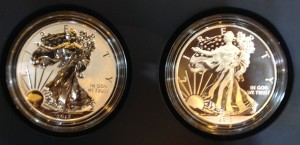
2013 American Eagle West Point Two-Coin Silver Set with reverse proof and enhanced uncirculated coins.
The American Silver Eagle Program was the result of the Reagan Administration wanting to sell the silver that was part of the Defense National Stockpile to balance the budget. Originally, the plan was to auction the bullion. After intense lobbying by the mining industry warning that such an auction would damage their industry, the concept was changed to selling the silver as coinage.
Changing the sales to coinage allowed for market diversification. Rather than a few people attempting to corner the market at an auction, selling coins on the open market allows more people to have access to the silver as an investment vehicle.
As codified in Title II of the Statue of Liberty-Ellis Island Commemorative Coin Act (Public Law 99-61, 99 Stat. 113), the “Liberty Coin Act” defines the program as we know it today including the phrase “The coins issued under this title shall be legal tender as provided in section 5103 of title 31, United States Code.”
As a legal tender item, the coin’s basic value has the backing of the full faith and credit of the United States government. Regardless of what happens in politics and world events, the coin will be worth at least its face value. Being minted by the U.S. Mint is a guarantee of quality that is recognized around the world making worth its weight in silver plus a numismatic premium.
Coins are perceived by the market as being more desirable than medals. Medals have no monetary value except as an art object. When it comes to investments, they do not hold a value similar to that of a legal tender coin. This is because medals are not guaranteed by the United States government, a key factor in determining its aftermarket value.
Once the coin has been sold by the U.S. Mint, its value is determined by various market forces. For more on how coins are priced, see my two-part explanation: Part I and Part II.
Why do American Silver Eagles have a One Dollar face value? Because the law (31 U.S.C. Sect. 5112(e)(4)) sets this as a requirement.
Why are the coins worth more than their face value? Because the law (31 U.S.C. Sect. 5112(f)(1)) says that “The Secretary shall sell the coins minted under subsection (e) to the public at a price equal to the market value of the bullion at the time of sale, plus the cost of minting, marketing, and distributing such coins (including labor, materials, dies, use of machinery, and promotional and overhead expenses).”
Can you spend the American Silver Eagle as any other legal tender coin? In the United States, you can use any legal tender coin in commerce at its face value. This means that if you can find someone to accept an American Silver Eagle, it is worth one dollar in commerce. However, it would be foolish to trade one-ounce of silver for one dollar of goods and services.
Commemorative Coins
Commemorative programs are different in that the authorizing laws add a surcharge to the price of the coin to raise money for some organization. Using the 2017 Boys Town Centennial Commemorative Coin Program (Public Law 114-30) as an example, Rep. Jeff Fortenberry (R-NE) introduced a bill (H.R. 893 in the 114th Congress) to celebrate the centennial anniversary of Boys Town. As with all other commemorative bills, the bill specified the number, type, composition, and denomination of each coin.
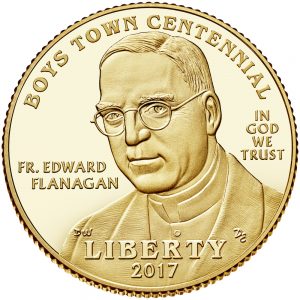
The Boys Town Centennial Commemorative coin features Fr. Edward Flanagan, founder of Boys Town
As with other commemorative, the coins will include a surcharge. Each gold coin will include a $35 surcharge, $10 for a silver dollar, and $5 for each clad half-dollar coin. When the program is over, the surcharges “shall be paid to Boys Town to carry out Boys Town’s cause of caring for and assisting children and families in underserved communities across America.”
The 2017 Boys Town Centennial Uncirculated $5 Gold Commemorative Coin is selling for $400.45 and the proof coin is selling for $405.45 suggesting that the process of producing a proof coin costs the U.S. Mint $5 more than the uncirculated coin.
What goes into the price of the coin? After the face value of $5, there is a $35 surcharge added that will be paid to Boys Town, there is the cost of the metals used. Here is a workup of the cost of the gold planchet using current melt values:
| Metal |
Percentage |
Weight (g) |
Metals Base Rate |
Price (g) |
Metal Value |
| Gold |
90% |
7.523 |
1259.00/toz |
40.48 |
$ 304.52 |
| Silver |
6% |
5.015 |
16.57/toz |
0.53 |
0.27 |
| Copper |
4% |
3.344 |
2.83/pound |
0.006 |
0.00 |
| Total metal value |
$ 304.79 |
Even though the melt value of the coin is $304.79, there is a service charge the U.S. Mint has to pay the company that creates the planchets. Thus, before the labor, dies, use of machinery, overhead expenses, and marketing is calculated into the price, the coin will cost $344.79 even though the legal tender face value of the coin is $5.
Taking it a step further, the average profit the U.S. Mint makes from gold commemorative coins is 8-percent (based on the 2015 Annual Report). If they are charging $400.45 for the uncirculated gold coin, the coin costs $368.41 to manufacture, $373.41 for the proof version.
Why collect these coins?
Why not?!
American Silver Eagle bullion coins were created for the investment market even though the authorizing law saw the benefit of allowing the U.S. Mint to sell a collector version. All of the Eagle coins are sold for investment or because people want to collect them for their own reasons. Some collect the collector version as an investment.
Commemorative coins are collected for their design or the buyer’s affinity for the subject and to support the cause which is being sponsored by the sale of the coin. Some collect commemorative coins like others collect series of coins.
Even though modern commemorative coins are sold for more than their face value, that does not mean they are not worth collecting. After all, can you buy a Morgan Dollar, Peace Dollar, Walking Liberty Half-Dollar, or a Buffalo Nickel for its face value?
Collecting bullion, commemorative, and other non-circulating legal tender (NCLT) coins is a matter of choice. If you choose to collect these coins, know that they will be worth more than their face value. And while they are legal tender coins, they are not meant for circulation. They are collectibles.
If you like these collectibles, enjoy your collection. Along with coins produced for circulation, I own American Silver Eagle coins, commemoratives, and other NCLT because I like them.
Some of the NCLT coins in my collection
-

-
2013 American Eagle West Point Two-Coin Silver Set with reverse proof and enhanced uncirculated coins.
-
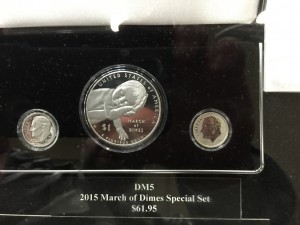
-
2015 March of Dimes Commemorative Proof set
-
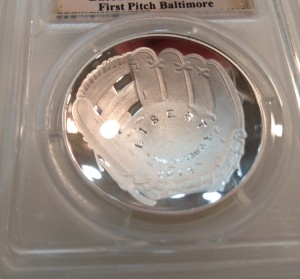
-
2014 National Baseball Hall of Fame commemorative proof dollar graded by PCGS PR70
-
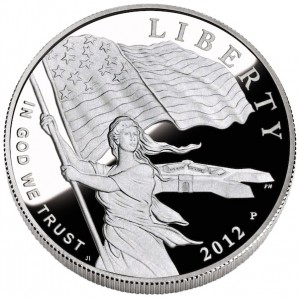
-
2012 Star-Spangled Banner Silver Commemorative Obverse depicts Lady Liberty waving the 15-star, 15-stripe Star-Spangled Banner flag with Fort McHenry in the background. Designed by Joel Iskowitz and engraved by Phebe Hemphill.
-
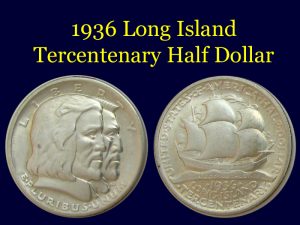
-
1936 Long Island Tercentenary Half Dollar
-
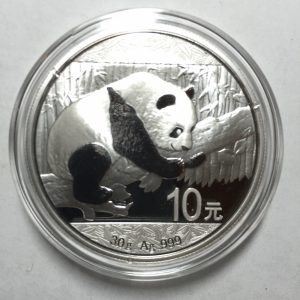
-
Reverse of the 2016 Chinese Silver Panda coin
-
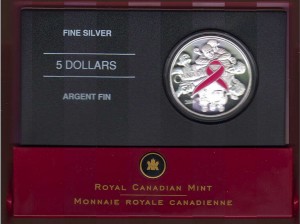
-
2006 Canada silver $5 Breast Cancer Commemorative Coin
-
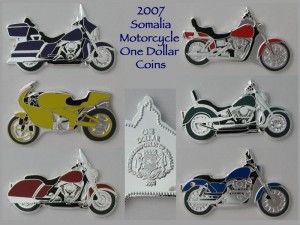
-
2007 Somalia Motorcycle Coins
-

-
2010 Somalia Sports Cars
Boys Town commemorative coin image courtesy of the U.S. Mint.
Jul 1, 2017 | coins, commemorative, legislative
 There are people who love front row seats. They go out of their way to find tickets in the front row. Whether it is a concert, the latest play, or the movies the front row gets you up close and personal.
There are people who love front row seats. They go out of their way to find tickets in the front row. Whether it is a concert, the latest play, or the movies the front row gets you up close and personal.
The front row is also louder. Because it is a desirable seat, the front row is crowded. You can get pushed around, cramped and you’re not going to tell the show to turn down the volume a bit. Many times, there are those who think they deserve the special perks of the front row even if they are the ordinary shlub off the street.
This is what it is like living around the nation’s capital. For a political junkie, this is the front row of politics. Even though more work is happening in state capitols, everyone crowds the front row. With the lure of the show, this front row is crowded, loud, and there are a lot of people who are inconsiderate and crowding the theater making it no longer fun.
When I started writing about numismatic legislation, it was interesting. It was fun going through the bills to find interesting stories and speculate whether it will pass. Now with all the garbage eliminating from both ends of Pennsylvania Avenue, I am finding it difficult to stay interested. The rhetoric and level of nonsense have turned the show from being tuneful to sound worse than the sound of two chalkboards mating.
I hope that something changes soon because there have been some interesting numismatic-related bills introduced that would be nice to see passed.
S. 1326: American Innovation $1 Coin Act
Sponsor: Sen. Christopher Murphy (D-CT)
• Introduced: June 8, 2017
• Referred to the Senate Banking, Housing, and Urban Affairs Committee
This bill can be tracked at http://bit.ly/115-S1326.
S. 1503: A bill to require the Secretary of the Treasury to mint coins in recognition of the 60th anniversary of the Naismith Memorial Basketball Hall of Fame
Sponsor: Sen. Elizabeth A. Warren (D-MA)
• Introduced: June 29, 2017
• Referred to the Senate Banking, Housing, and Urban Affairs Committee
This bill can be tracked at http://bit.ly/115-S1503.
Jun 1, 2017 | coins, commemorative, legislative, news, US Mint
 Just because congress is dysfunctional does not mean they cannot curry favor with various constituencies. This month we see bills introduced for a Coast Guard and American Legion 100th Anniversary commemorative coins programs. Both are worthy organizations but given the toxic nature of Congress, who knows if these commemorative programs will be passed.
Just because congress is dysfunctional does not mean they cannot curry favor with various constituencies. This month we see bills introduced for a Coast Guard and American Legion 100th Anniversary commemorative coins programs. Both are worthy organizations but given the toxic nature of Congress, who knows if these commemorative programs will be passed.
To pair with the Currency Optimization, Innovation, and National Savings (COINS) Act (S. 759) introduced by Sen. John McCain (R-AZ), there is now a version introduced in the house (H.R. 2299). Even though it is a good idea, it will not be supported in the current environment.
I wish some of these bills had a chance….
H.R. 2299: Currency Optimization, Innovation, and National Savings Act of 2017
Sponsor: Rep. Claudia Tenney (R-NY)
• Summary: To save taxpayers money by improving the manufacturing and distribution of coins and notes.
• Introduced: May 2, 2017
• Last Action: May 2, 2017: Referred to the House Committee on Financial Services
This bill can be tracked at http://bit.ly/115-hr2299.
H.R. 2317: United States Coast Guard Commemorative Coin Act of 2017
Sponsor: Rep. Joe Courtney (D-CT)
• Introduced: May 3, 2017
• Last Action: May 3, 2017: Referred to the House Committee on Financial Services
This bill can be tracked at http://bit.ly/115-HR2317.
S. 1021: United States Coast Guard Commemorative Coin Act of 2017
Sponsor: Sen. Christopher Murphy (D-CT)
• Introduced: May 3, 2017
• Last Action: May 3, 2017: Referred to the Committee on Banking, Housing, and Urban Affairs
This bill can be tracked at http://bit.ly/115-S1021.
S. 1182: The American Legion 100th Anniversary Commemorative Coin Act
Sponsor: Sen. Todd Young (R-IN)
• Introduced: May 18, 2017
• Last Action: May 18, 2017: Referred to the Committee on Banking, Housing, and Urban Affairs
This bill can be tracked at http://bit.ly/115-S1182.
H.R. 2519: The American Legion 100th Anniversary Commemorative Coin Act
Sponsor: Rep. Timothy Walz (D-MN)
• Introduced: May 18, 2017
• Last Action: May 18, 2017: Referred to the House Committee on Financial Services
This bill can be tracked at http://bit.ly/115-HR2519.






 Trying to follow the inner workings of politics is more frustrating than what you see on television news. Part of following the inner workings of Congress is to try to figure out what Congress will do next is not only understanding where legislation is in the process, what Congress calls “regular order,” but it also requires understanding who is asking for what favors in order to get pet projects passed.
Trying to follow the inner workings of politics is more frustrating than what you see on television news. Part of following the inner workings of Congress is to try to figure out what Congress will do next is not only understanding where legislation is in the process, what Congress calls “regular order,” but it also requires understanding who is asking for what favors in order to get pet projects passed.

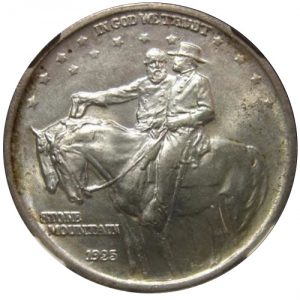
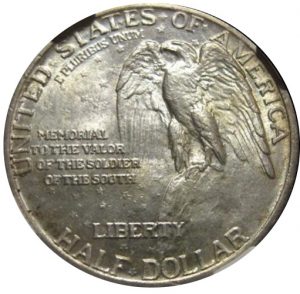
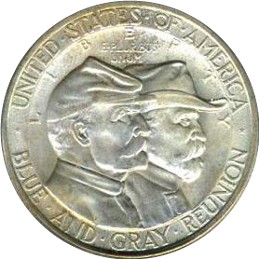
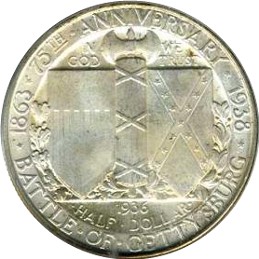
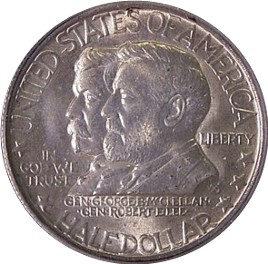
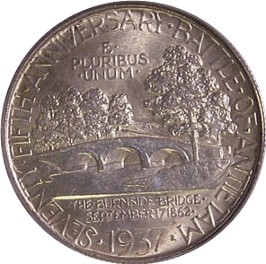
 As part of my bill tracking, I am including the status of the
As part of my bill tracking, I am including the status of the 










